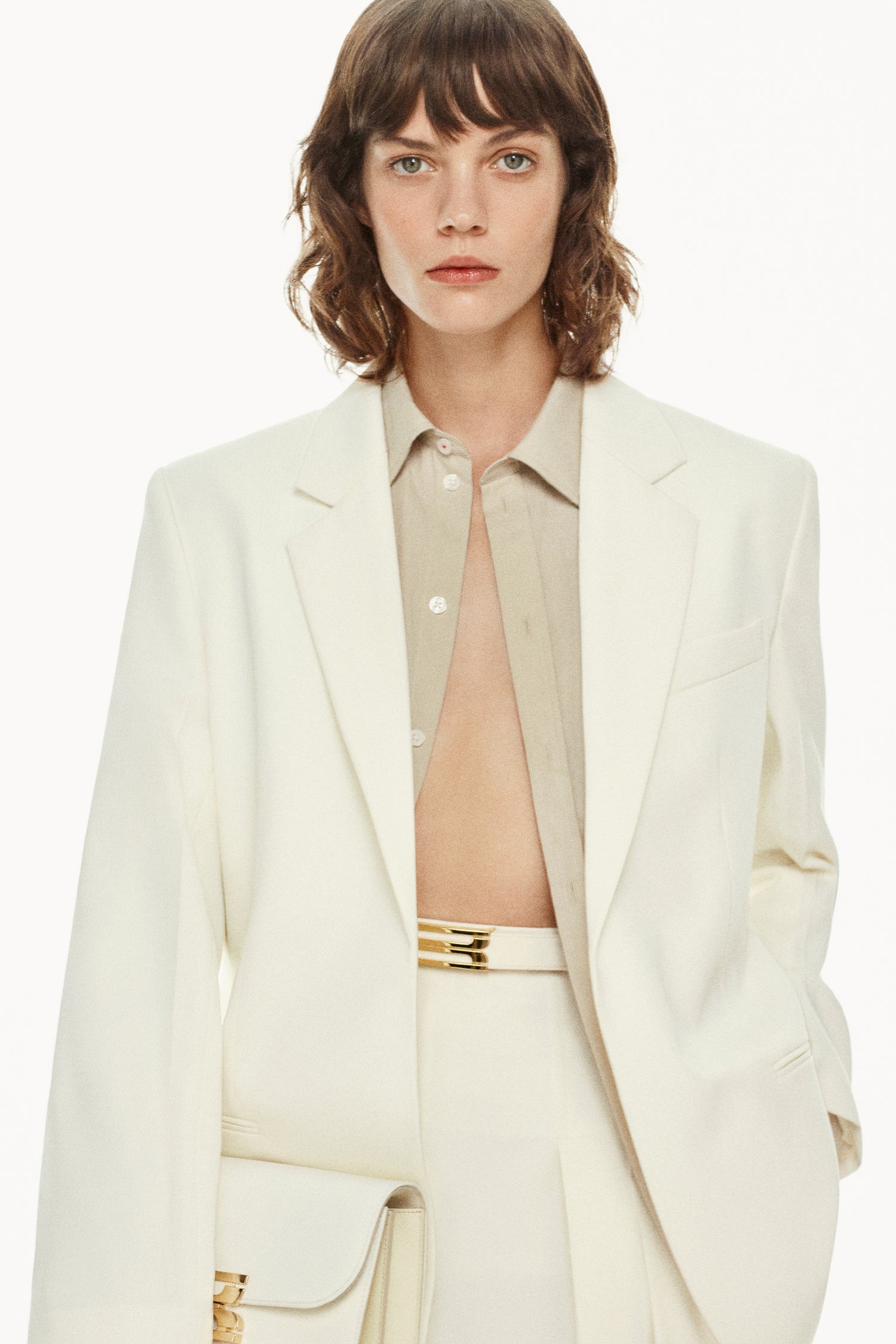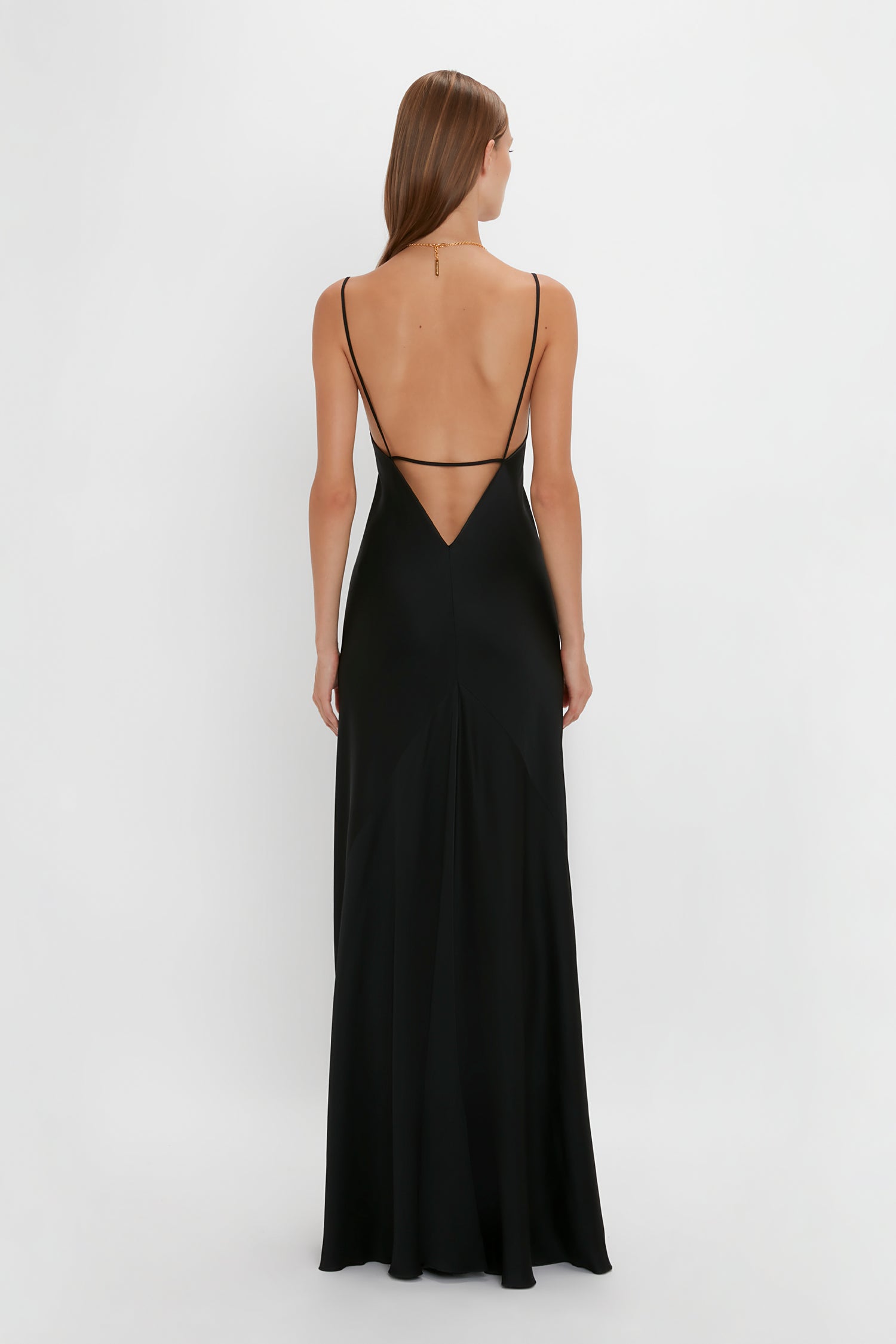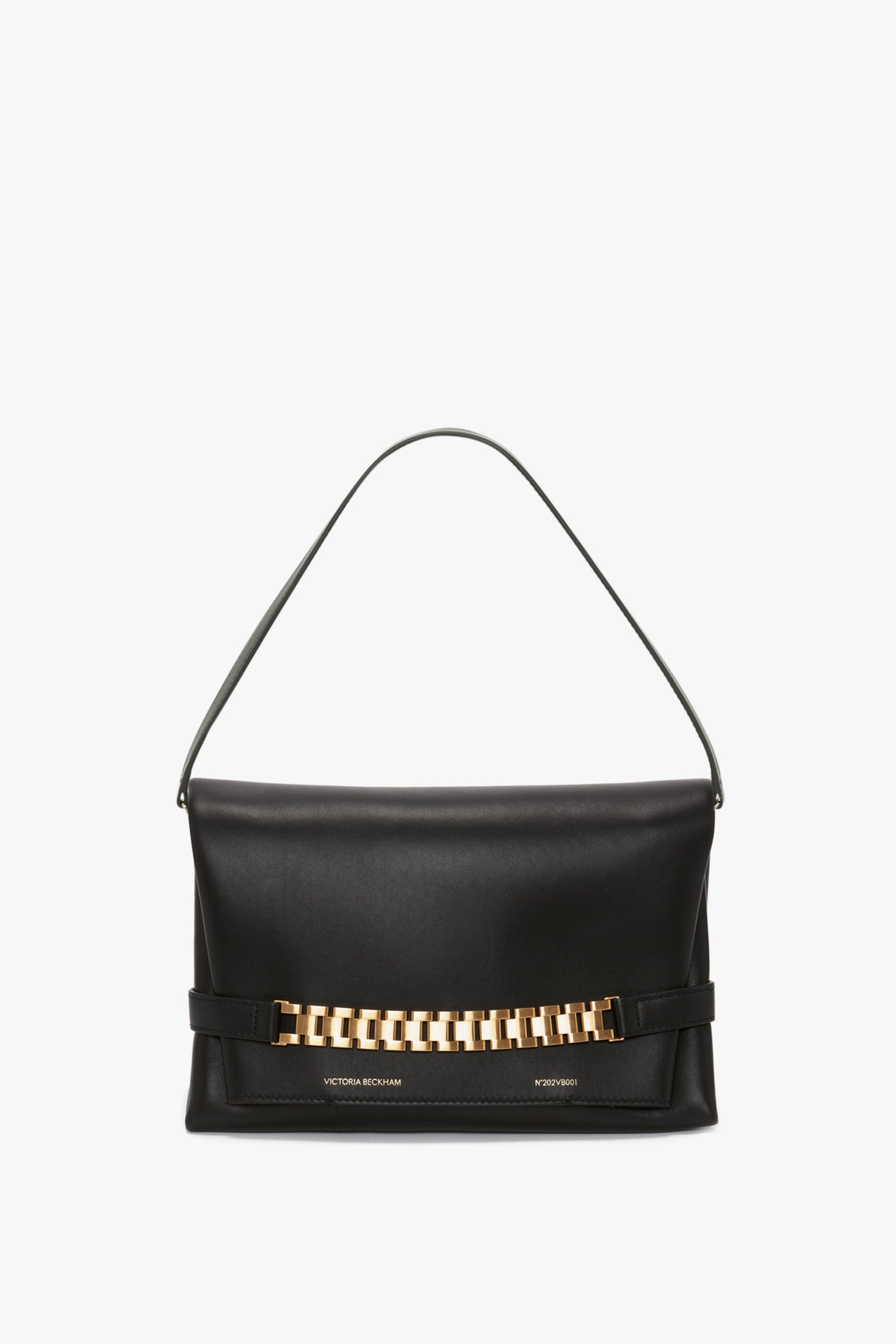It is a rare feat in fashion when a celebrity-turned-designer transcends the industry’s scepticism and carves out a serious luxury brand. Victoria Beckham has done precisely that. Once dismissed as a fleeting vanity project, her eponymous label is now a fully fledged house, celebrated for its clean tailoring, polished minimalism and a refined vision of modern femininity. In 2023, the brand reached a remarkable milestone, surpassing £100 million in annual sales, a figure that signals not only commercial strength but also cultural relevance at a time when many heritage maisons are slowing down.
Victoria Beckham, who first captured global attention as “Posh Spice” in the Nineties, has long been a master of reinvention. After conquering the music scene and cementing her place in pop culture alongside the Spice Girls, she shifted her focus to fashion with unwavering determination. “I always wanted to be taken seriously as a designer,” she told Vogue(2011), reflecting on her early collections. More than a decade later, her persistence has paid off. The brand has become a fixture of London Fashion Week, praised by critics for its sharp aesthetic and admired by clients for its wearability.
“I always wanted to be taken seriously as a designer”
Victoria Beckham, Vogue 2011
From razor-sharp suits to fluid dresses, and now an expanding beauty line, Victoria Beckham has achieved what few celebrity designers manage: credibility. And in an industry defined by fleeting trends, her brand stands as proof that a clear identity, coupled with a relentless work ethic, can turn a personal name into a global fashion business.
From Posh Spice to Powerhouse Designer: The Origins of Victoria Beckham’s Fashion Brand.
The story of Victoria Beckham as a fashion force begins in an era where celebrity ventures into design were rarely taken seriously. What makes her trajectory compelling is not only the persistence with which she approached fashion but also the remarkable way she turned scepticism into respect. Before the label ever reached £100 million in sales, it started with a handful of dresses, a small presentation in New York, and a designer who refused to be underestimated.
A Quiet Debut in New York
Victoria Beckham launched her fashion label in September 2008 with a small presentation at the Waldorf Astoria in New York. The debut was deliberately intimate, showing just ten dresses to a tightly curated audience of editors and buyers. “I wanted to start small, to be considered credible. This was never about a quick celebrity line,” Beckham recalled in an interview with The Guardian (2011).
The dresses were sleek, form-fitting and elegant, far from the glitzy stage outfits of her Spice Girls years. Fashion critics were initially cautious, but the reception was surprisingly warm. Sarah Mower of Vogue praised the collection for its sophistication and control, noting that Beckham had a clear design point of view. This was a crucial moment, a celebrity designer proving that ambition could be met with substance.
“I wanted to start small, to be considered credible. This was never about a quick celebrity line”
Victoria Beckham, The Guardian 2011
Early Struggles and Growing Pains
The following years were not easy. Victoria Beckham financed much of the venture herself, while also navigating an industry notorious for dismissing celebrity-driven brands. For several seasons, her collections remained small and focused on dresses, a category that defined her personal style and public image.
In 2010, she expanded into handbags, a move that immediately attracted attention from luxury buyers. Net-a-Porter stocked her pieces, solidifying the label’s transition from an experiment to a serious fashion business. Yet profitability remained elusive. “Building a fashion brand takes time. It is like building a house, brick by brick,” she told The Telegraph(2012).

Recognition and London Fashion Week
By 2011, Victoria Beckham had already achieved her first significant recognition, the Designer Brand of the Year award at the British Fashion Awards. The accolade silenced many critics and marked her arrival as a credible creative force. “She is serious, she works hard, and her collections have a point of view,” Marc Jacobs commented to Vogue (2011), highlighting Beckham’s determination to establish herself.
In 2013, the brand moved its base of operations from New York to London, aligning Beckham more closely with her British roots and cementing her presence in one of the world’s most influential fashion capitals. Her shows became highlights of London Fashion Week, known for their precision tailoring and minimalist aesthetic.
The Expansion Years
The mid-2010s were crucial for the evolution of Victoria Beckham’s brand. She introduced ready-to-wear collections that expanded beyond dresses, offering trousers, coats and knitwear that reflected her own polished wardrobe. Accessories, eyewear and footwear followed, creating a more complete lifestyle brand.
In 2017, the label opened its first flagship boutique on Dover Street, London. Designed with a minimalist, gallery-like aesthetic, the store reflected the brand’s DNA, clean lines, understated luxury and a focus on experience. The boutique was not only a retail space but also a statement of intent. Victoria Beckham was here to stay.
A Strategic Pivot Beauty and Collaboration
As with many modern luxury brands, diversification became key. In 2019, Victoria Beckham Beauty was launched in collaboration with Sarah Creal, a former executive at Estée Lauder. The beauty line focused on clean formulations and sophisticated packaging, instantly appealing to the same clientele that admired Beckham’s fashion. The beauty division became a surprising growth engine, with products like the Satin Kajal Liner and Cell Rejuvenating Priming Moisturiser becoming cult favourites.
Collaborations also played a role in building visibility. In 2017, Victoria Beckham teamed up with Target in the United States to create a more accessible line, which sold out almost instantly. While some in the luxury world raised eyebrows, the move demonstrated her versatility and understanding of different markets.
Challenges Along the Way
Despite the growing visibility, the brand faced financial turbulence. For several years, reports suggested the label was running at a loss, with Beckham herself investing significant personal funds to keep the business afloat. By 2019, losses reached £12.3 million, leading some commentators to question the brand’s long-term viability (BBC, 2019).
However, Victoria Beckham remained steadfast. “I have always believed in hard work, and I am building something for the long term,” she told Financial Times (2019). The turning point came with a combination of restructuring, focusing on core products, and expanding into beauty, which provided fresh revenue streams.
Building a Brand Identity
What set the brand apart in its formative years was its consistent identity. Victoria Beckham’s collections were never about chasing trends but about refining a vision of contemporary elegance. She championed clean lines, neutral palettes and impeccable tailoring, appealing to women who wanted understated luxury rather than loud logos.
This identity resonated with a clientele that sought timeless pieces. As fashion’s pendulum swung between maximalism and minimalism, Beckham held firm. “I design clothes I want to wear myself. It is about confidence, ease and sophistication,” she told Vogue (2015). That ethos would eventually anchor the brand’s transition into a £100 million business.
How Victoria Beckham Reached the 100 Million Milestone
The £100 million sales figure is more than a number. It is a symbol that Victoria Beckham has moved beyond scepticism to become one of the most relevant luxury brands of the moment. This achievement did not happen overnight. It is the result of sharp creative direction, strategic diversification, a growing beauty division, and an ability to understand the rhythm of modern luxury.
The Power of Authenticity
When Victoria Beckham entered the fashion world, many assumed her name would be enough to generate buzz. Instead, she chose to focus on authenticity. She worked relentlessly on her collections, surrounding herself with experienced pattern cutters, fabric specialists and production experts. Critics soon realised that the quality of the work was real. “She is not a celebrity designer. She is a designer who happens to be a celebrity,” observed Suzy Menkes in the International Herald Tribune (2012).
This commitment to authenticity proved essential for long-term credibility. By the mid-2010s, clients knew they were buying precision tailoring, fluid dresses and carefully constructed separates. The consistency of the collections built trust, which translated into loyal customers.
Fashion Meets Beauty
One of the most decisive moves was the launch of Victoria Beckham Beauty in 2019. In a market where many luxury brands rely on fragrance and cosmetics to drive revenue growth, Beckham entered with clarity and focus. Working with Sarah Creal, she developed products that reflected the same values as her fashion: clean lines, luxurious packaging and modern functionality.
The Satin Kajal Liner became a cult hit, repeatedly selling out online. At the same time, the Cell Rejuvenating Priming Moisturiser, developed in collaboration with Professor Augustinus Bader, bridged the gap between beauty and skincare innovation. Beauty quickly became a strong pillar of the business, contributing significantly to sales growth and providing an entry point for younger consumers.

Navigating Industry Challenges
The wider luxury industry has not been immune to economic turbulence. In 2023 and 2024, reports from Business of Fashion and Financial Times underlined a slowdown in consumer spending across Europe and Asia. Yet Victoria Beckham managed to grow. This resilience can be attributed to the brand’s positioning. It does not depend on logo-driven products or fleeting trends. Instead, it offers timeless tailoring, versatile separates, and beauty staples that remain relevant from season to season.
Critics who once doubted the financial viability of the brand now recognise this resilience as proof of long-term strength. “She has become a serious player, not just a celebrity label,” remarked fashion editor Vanessa Friedman in The New York Times (2023).
Clever Positioning in the Luxury Market
Victoria Beckham’s rise also reflects clever positioning. The brand sits in a sweet spot between classic luxury houses and emerging labels. It offers refinement without the intimidation of old school couture. At the same time, it is aspirational enough to compete with established brands like The Row or Stella McCartney.
The pricing strategy has also been carefully managed. Handbags and ready-to-wear items sit within the luxury range but are often slightly more accessible than those of some competitors, thereby creating a broader customer base. Beauty, meanwhile, drives volume sales and brand visibility, ensuring that Victoria Beckham reaches both high-spending clients and aspirational consumers.
The Celebrity Factor
Although the brand is no longer defined by celebrity, the Beckham name continues to carry cultural weight. The family remains one of the most photographed in the world, and Victoria Beckham’s personal style is a constant source of inspiration. She wears her own designs daily, offering what amounts to the most authentic brand campaign possible.
In 2023, Netflix announced a docuseries focusing on David Beckham’s life and career, with Victoria Beckham playing a central role. The timing could not have been better. As the series gained global audiences, the brand’s visibility soared. This synergy between cultural relevance and brand presence fuelled momentum at a time when many competitors were struggling.
A Global Clientele
Victoria Beckham is not confined to the United Kingdom. The brand has built a strong international clientele, with particular strength in the United States, Europe and parts of Asia. Online retail and partnerships with platforms such as Net-a-Porter and MatchesFashion have been crucial in expanding reach.
The flagship store in Dover Street remains an emblematic space, but digital sales now account for a significant share of revenue. This balance between physical presence and online expansion ensures the brand can adapt to shifting shopping habits.
The Secret Ingredient
The secret to the £100 million milestone is a combination of discipline, evolution and personal credibility. Victoria Beckham has created a brand identity rooted in her own vision, which she has then carefully expanded into categories that align with that DNA. She resisted the temptation of short-term trends and instead focused on building a lasting legacy.
As Caroline Issa, editor of Tank Magazine, remarked in 2021, “Victoria Beckham has refined a vocabulary of modern elegance. It is a language that her clients understand and continue to seek out.” That refinement has now become a profitable business model.
“Victoria Beckham has refined a vocabulary of modern elegance. It is a language that her clients understand and continue to seek out.”
Caroline Issa, Tank Magazine Editor, 2021
The Three Must-Have Pieces from Victoria Beckham
Every luxury house has its icons, those pieces that define its aesthetic and resonate with clients season after season. For Victoria Beckham, three designs stand out as essential investments, combining her signature polish with a sense of modernity that makes them truly timeless. These items are more than products; they are touchstones of the brand’s philosophy of elegance and ease.
The Victoria Beckham Tailored Blazer

No single garment represents Victoria Beckham’s vision of fashion more clearly than her tailored blazer. From the earliest collections, sharp suiting has been at the heart of her work. The blazers are cut with precision, structured but never stiff, and designed to flatter the body without overwhelming it.
The inspiration comes directly from Beckham herself. Known for her love of masculine tailoring softened with feminine nuance, she has often been photographed wearing her own blazers in off-duty settings. “I love tailoring, it gives me confidence and structure,” she told Vogue (2018).
The blazer has become a signature item for clients who want a wardrobe anchor that transcends seasons. Whether styled with trousers, jeans or skirts, it carries an understated luxury that avoids the clichés of overt branding. This makes it a genuine investment piece, one that aligns perfectly with the brand’s ethos of timeless sophistication.
The Slip Dress

The second must-have is the slip dress, a garment that Victoria Beckham has reimagined with her characteristic restraint. While slip dresses are often associated with a certain Nineties nostalgia, Beckham has elevated the silhouette into something enduringly chic.
Her versions are made with fluid silks and satins, cut on the bias to drape naturally across the body. The effect is sensual without being provocative, elegant without being fussy. The simplicity of the dress allows it to move seamlessly from day to night, depending on styling.
The slip dress embodies Beckham’s design philosophy, which she once described to The New York Times (2019) as “clothes that give women ease and confidence.” It has become a favourite among fashion editors and celebrities alike, seen on red carpets and at private dinners. For clients, owning a Victoria Beckham slip dress is about investing in effortless glamour that will never go out of style.
The Chain Pouch Bag

Accessories have been a vital part of the Victoria Beckham brand’s growth, and none more so than the Chain Pouch Bag. Launched as part of her accessories line, the bag quickly became a best seller.
The design is sleek and minimalist, featuring a soft pouch structure that contrasts with a bold metal chain handle. It captures the brand’s balance between restraint and statement, offering both function and fashion. Available in a range of colours from understated neutrals to bold seasonal shades, the Chain Pouch has achieved cult status among luxury shoppers.
Its appeal lies in versatility. It works as an everyday bag for women who want practicality with edge, while also serving as a polished evening accessory. The success of the bag reflects Beckham’s skill in translating her aesthetic into accessories that carry commercial power. As one buyer told Business of Fashion in 2022, “The Chain Pouch is the perfect expression of Victoria Beckham’s style, clean yet impactful.”
Why These Pieces Matter
Each of these items, the tailored blazer, the slip dress and the Chain Pouch Bag, speaks to the DNA of Victoria Beckham. They are not about trend chasing but about refining staples into luxury essentials. Together they embody the brand’s combination of strength and subtlety, two qualities that Beckham herself embodies.
For clients entering the world of Victoria Beckham, these three items serve as the perfect introduction. They highlight the brand’s commitment to quality and detail, while also offering wearability that extends beyond the realm of seasonal fashion. In a luxury landscape often defined by logos and statement dressing, Victoria Beckham’s icons stand out precisely because they whisper rather than shout.

Conclusion: A Legacy Still in Motion
Victoria Beckham has achieved what few celebrity designers ever manage, turning a name once synonymous with pop culture into a global fashion business worth over £100 million in sales. The journey has been defined by determination, a clear vision, and an ability to balance glamour with substance. From her sharp tailoring to her coveted beauty line, the brand reflects her own evolution from Spice Girl to respected designer and entrepreneur.
The story is far from finished. With the recent Netflix docuseries placing Victoria Beckham and her family back in the spotlight, the brand gains a cultural platform that extends well beyond the runway. The series introduces her to a new generation of viewers who may know her as a style icon before a pop star, reinforcing the global reach of her name. This renewed visibility is expected to boost both fashion and beauty sales, further consolidating her position in the luxury landscape.
The milestone of surpassing £100 million is not the culmination of her brand but rather a stage in its ongoing growth. Victoria Beckham has built credibility in a notoriously unforgiving industry, and she now stands as proof that resilience and refinement can triumph over doubt.
For fashion observers, the story is as much about vision as it is about numbers. And for clients, it is a reminder that behind every blazer, slip dress or Chain Pouch lies the belief that elegance is never accidental. Victoria Beckham designs with conviction, and that conviction has become her signature.
José Amorim
This article was created exclusively for LuxuryActivist.com. All content is protected by copyright. Images are used for illustrative purposes under fair use. If you own the rights to any image and wish it to be removed, please don’t hesitate to contact us, and we will act promptly.
This story originally appeared on Luxuryactivist

